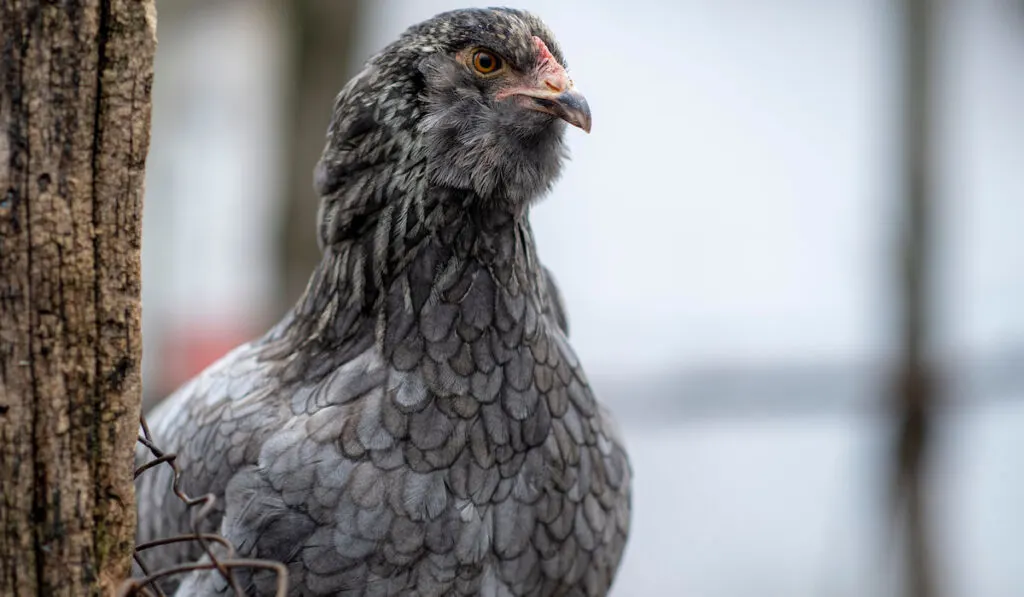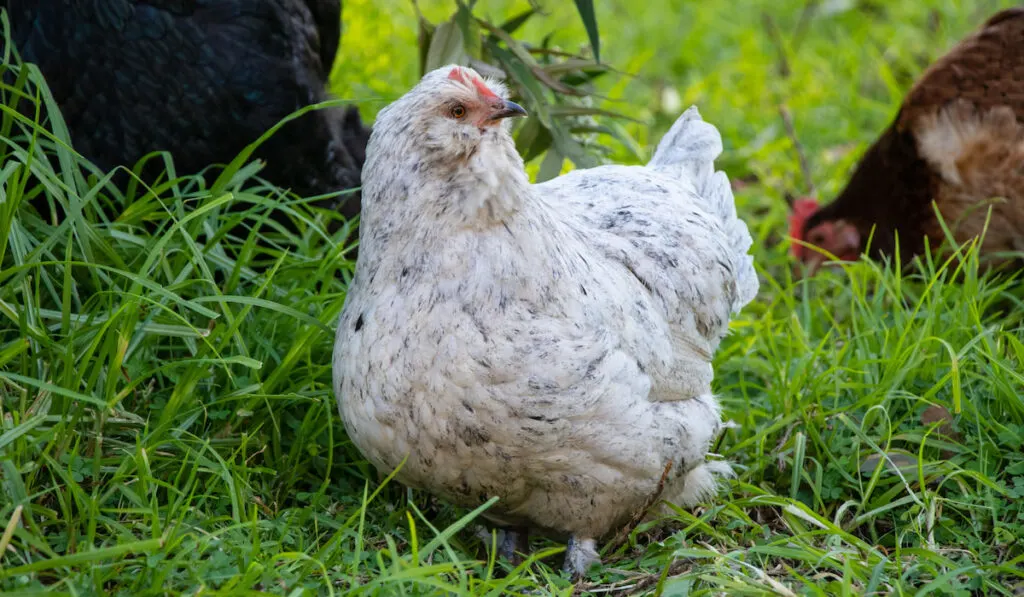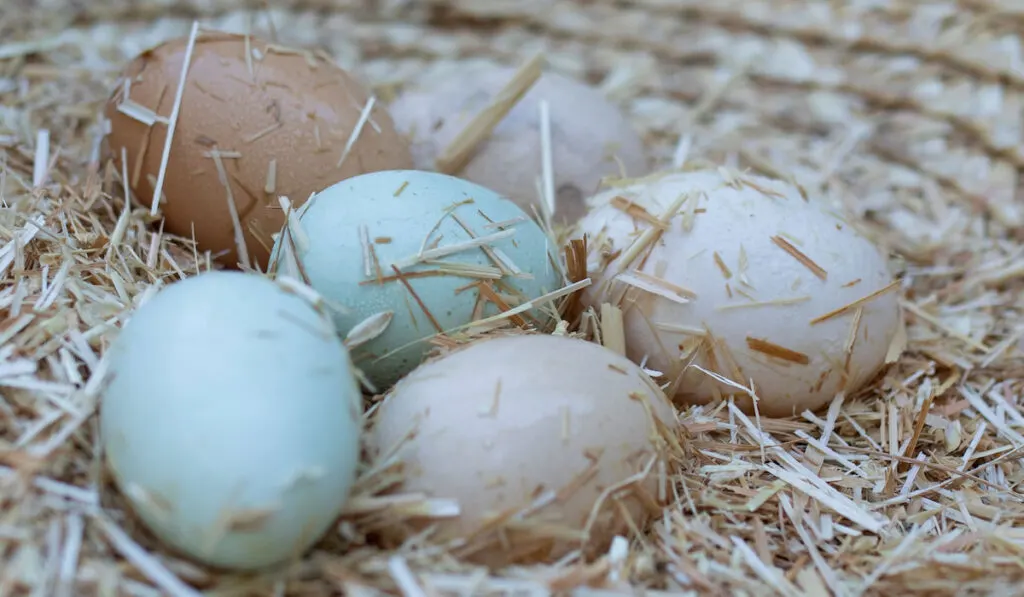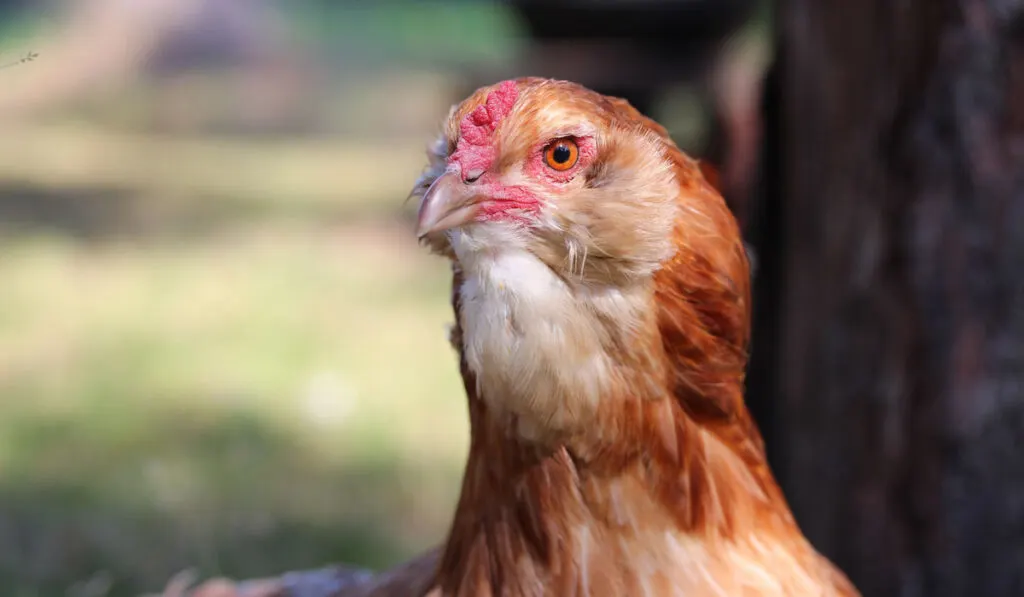Araucana chickens are a charming, eccentric, and rare breed of chicken.
They are often confused with the Ameraucana chickens and Easter Eggers because of their egg color similarity. However, there are differences.
Araucana chickens are popularly known for their blue eggs and tufted cheeks. The tufts make them appear bearded and are unique to Araucana chickens. Only Araucana chickens and other breeds derived from them have this unique feature.
Besides the tufted cheeks and blue eggs, the Araucana chicken has other unique characteristics that are peculiar to the breed.
This article will provide you with a comprehensive rundown of the Araucana chicken breed. From their mysterious yet fascinating origin to their distinctive characteristics and more — this is a must-read!
Let’s go!

Table of Contents
Araucana Chicken Key Information
| Breed name | Araucana |
| Breed classification | Bantam |
| Colors | Varied |
| Weight | 3.5–5.5 lbs. |
| Temperament | Friendly, docile |
| Purpose | Eggs |
| Productivity | 200 eggs per year |
| Tolerance | Cold-hardy and heat tolerant |
| Egg size | Medium size |
| Egg color | Blue |
| Broodiness level | High |
| Feathered legs | No |
| Care requirement | Low |
History
The ancestry of Araucana chickens has given rise to numerous debates.
The Araucana chicken breed is named after a region in Chile called Araucania, where they were first discovered.

According to historians, Araucana chickens might have been in existence long before they were discovered in Chile.
They believe that the Araucana chickens existed in South America long before the Europeans set foot in the Americas, and as such weren’t introduced by Europeans.
It’s also believed that the Araucana chicken is a hybrid resulting from crosses between parent breeds of South American descent — the Colloncha chicken and the Quetros chicken.
However, there is no concrete information about their true origin.
Professor Salvador Castello discovered them in 1914 when he visited Chile, and they made their debut at the first World Poultry Congress in 1921.
Araucana chickens made their way to the United States in the 1930s and were accepted by the Standard of Perfection of the American Poultry Association in 1976.
Professor Castello believed the chickens belonged to new species, and he described them as unique birds. They soon became loved by farmers.
Features of the Araucana Chicken
The Araucana chicken may be popular for its blue-shelled eggs, but its overall appearance is what makes it stand out among other breeds of chicken.
This chicken has a royal bearing, somewhat like a peacock but without the characteristic flashy tail.
Araucana chickens have a prominent crest of feathers atop their heads, a bright red, triple pea comb, and no wattles or visible earlobes. They also have yellow skin beneath their feathers.
Other notable features of the Araucana chicken include:

1. Comical Feathers
Araucana chickens have tufts of feathers that protrude from their cheeks. The feathers grow under a fold of skin under their ears and come out on each side.
These tufts have been compared to a gentleman’s handlebar mustache.
Although the tufts appear somewhat comical, they add a lot of character to the Araucana chicken’s appearance.
2. Rumpless Body
Rumpless means they have no tail or tailbone.
Araucana chickens have no tail attached to their rear like other breeds have.
This feature contributes to the Araucana chicken’s upright posture and gives it a unique appearance.
3. Beautiful Blue Eggs
One of the very notable features of this chicken breed is its egg.
Araucana chickens typically lay medium light-blue eggs.
4. Rapid Growth
Araucana chickens, although small in size, grow very fast. They tend to grow faster than other breeds.

Standard Weight of the Araucana Chicken
The Araucana is considered smaller in size compared to its counterparts.
Araucana chickens might pass for bantams, but they are slightly bigger and even have their own bantam varieties, which might be difficult to find because both bantam and standard varieties are rare.
They weigh in at about 5 lbs. on average. They may be small, but it pays off as they grow faster than other breeds of chicken.
If you rear them, you’ll find that they outgrow their awkward stage faster than most breeds.
Standard
Cock: 5–7 lbs.
Hen: 4–6 lbs.
Bantam
Bantam cock: 1.6–2 lbs.
Bantam Hen: 1.4–1.8 lbs.

Araucana Chicken Temperament
There are mixed opinions on this subject. The Araucana chicken, to some, might be flighty and anxious, and to others, the most friendly of birds.
It’s been said that many breeders will tell you that they are wonderful for children because they love being cuddled and handled.
Araucana chickens are a friendly and docile breed, which in fact, makes them a joy to have around.
They are known for their beauty and ability to get along with other birds. They are also hardy and can adapt to any climate.
They are good foragers and help you spend less on food while still energetically wandering around, flapping their wings, and staying alert.
Araucana chickens also have curious and intelligent personalities.
They’re an excellent example of beauty with brains and are suitable to be kept as pets.
Brooding
Araucana chickens are amazing mothers. They are dedicated to sitting on their eggs and nurturing their young chicks.
You don’t have to worry about brooding their chicks; leave the hen to her brooding.
They are caring and protective, so be careful when trying to take one of the chicks while the mother hen is there. It could bite!
Just joking. They might leave you with a few pecks but take it in good faith. It’s just to protect their chicks.
Breeding
One of the most important things to note while breeding Araucana chickens is that crossing two Araucana birds may result in the death of most of the chicks.
This is a direct consequence of their lethal tuft gene. Two tuft genes, i.e., one from each parent, in one chick can often be lethal, leading to death.
To prevent this, ensure that only one of the parents is an Araucana chicken.
Mating them with other chicken breeds often results in a high production rate, as all the chicks often survive in this case.

How to Sex Araucana Chicks?
Determining the gender of Araucana chicks is no simple task.
It can take weeks before any definite traits are noticed as they lack obvious secondary sexual attributes (i.e., comb, wattles) that aid the sexing process.
Most farmers are unable to sex them as chicks and have to wait until they are much older.
You might need to wait until they are at least seven weeks old to tell them apart, which is a real downside.
At seven weeks of age, the males usually have more pronounced combs than the females, and it can be seen by parting the crest of feathers on top of their heads.
Feeding and Nutrition
Araucana chickens aren’t high-maintenance birds, so their care requirements are standard.
Naturally, all chickens need balanced feeding to survive. This breed, in particular, needs a starter feed that is 20% high in protein.
You can transition them to growers’ mash or adult chicken feed of 16% protein as they grow older.
Matured hens should have oyster shells mixed into their feed for calcium to produce healthy eggs.
They are also good foragers, and if given the freedom to move around, they can get a lot of nutrients from foraging.
However, foraging shouldn’t replace their chicken feed ration but used in addition to it.
You also need to keep them adequately hydrated to maintain internal homeostasis and aid digestion and other metabolic activities.
Ensure that you constantly have fresh clean water in the coop or run.

Araucana Chicken — Egg Laying
Araucana hens are not particularly meant for production, so you shouldn’t expect too much from the hen.
However, they earn their keep by laying adorable blue eggs and save you the stress of coloring your eggs for Easter.
They pay an average rate of approximately three eggs per week and 200 eggs per year.
This breed originated from a warm climate in South America and therefore takes a break from laying eggs during winter.
Araucana Chicken Shortcomings
There are a few reasons you might be discouraged from rearing this breed.
● They are considered to be low egg producers.
● The rumpless gene reduces the fertility of the Araucana chicken.
● They are rare, which makes them one of the most cherished breeds.
● Their ear tufts come from a dominant lethal gene, which causes high mortality in their young offspring.

Araucana Chicken Common Health Issues
The Araucana chicken has lethal genes which pose a threat to their chicks, but other common health problems are:
1. Low Productivity
Stress or vitamin deficiency can result in weakness, lethargy, respiratory issues, and abnormal dropping, which affects the birds’ general well-being and productivity.
2. Parasitic Infections
Common parasites like worms, lice, and ticks can cause diseases.
3. Foot Injuries
Araucana chickens can suffer cuts in the leg or foot, which can lead to more serious problems like bumblefoot.

Araucana Chicken Health and Care
Adult Araucana chickens are overall healthy birds. Their chicks, however, are cases of concern, as there can be many premature deaths when care is not taken.
You must take precautionary measures to protect the chicks from harsh weather conditions and provide them with the nutrients required for optimal growth.
It’s important that the birds are also vaccinated and dewormed to keep them immune to common poultry diseases.
Vitamin supplements can also be added to their feed or water to meet their nutritional requirements. Ensure you consult with a veterinarian on how best to do that.
Their small pea combs are prone to frostbite, so keeping them warm during harsh winters is important.
Conclusion
The Araucana chicken is a great choice if you’re looking to add them to your farm.
Although they are average egg layers, Araucana chickens bring uniqueness and diversity to the flock.
With interesting features, like their tufted facial feathers, egg color, and friendly personality, they are pets you want to have an experience rearing.
Resources
- https://www.thehappychickencoop.com/everything-you-need-to-know-about-araucana-chickens/
- https://en.wikipedia.org/wiki/Easter_egger
- https://poultrykeeper.com/chicken-breeds/araucana-chickens
- https://agro4africa.com/araucana-chicken/
- https://en.wikipedia.org/wiki/Ameraucana
- https://en.wikipedia.org/wiki/Araucana
- https://the-chicken-chick.com/ameraucana-easter-egger-or-araucana/
- https://poultrykeeper.com/chicken-breeds/araucana-chickens/
- https://thechickenstreet.wordpress.com/2011/09/07/araucana-sexing-not-so-simple/
